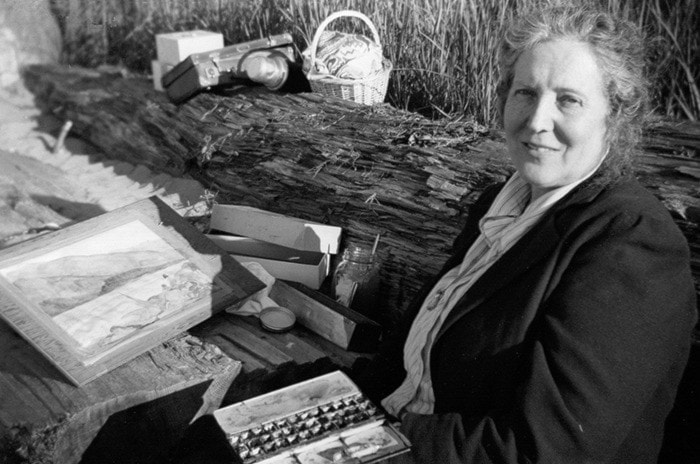Condolence letters consoled Lilette Mahon after her husband’s death on June 18, 1937. A most perceptive tribute was penned by Laura Jamieson: “The freedom that he gave you was so generous.” That statement was not so much a reflection on Edward as it was on Lilette, who had dedicated much of her time for social causes. Her commitment to education commenced with service on the Vancouver school boards and culminated with her election to the presidency of the BC School Trustees Association. She served as vice-president in the local branch of the League of Nations Society. She ran for councillor on the civic government, and in 1935 she represented the Reconstruction Party in Vancouver Centre. Although she won neither seat, she made her struggle for social justice clear to all. Edward could proudly declare her to be ‘a power in the land.”
Hard times followed, as the Depression had nearly bankrupted Edward. With her son Bryan she moved to a smaller rental house. As the economic climate improved, it was possible to sell the remaining real estate assets Edward had owned. Family finances brightened after Bryan secured a position with Boeing Aircraft of Canada. They started planning a new house, which would reflect the new movement being launched at the time.
“Art in Living” was a concept that coupled architects with artists in the design of novel homes, which were uncluttered by needless ornamentation, possessed artistic appeal, and were affordable. Well known artists like B.C. Binning and Fred Amess collaborated with architects to carry out the new vision. For her new home on SW Marine Drive, Lilette engaged a relatively unknown architect, C.E. (Ned) Pratt. Ned would later become famous as a founder of the West Coast Modern style of residential housing. He is best known for the design of the BC Electric building on Burrard Street and the adjacent Dal Grauer Substation.
The house on a sloping lot offered fine views toward Boundary Bay. It was flooded with natural light from the large windows on its south aspect. Bryan, who was away much of the time on Boeing business, questioned Pratt on some of the features, but Lilette fully supported the design, which, according to her, “brought the outside in and the inside out”. The large lot with a small stream running through offered the perfect setting for her other passion — gardening.
At the same time she gravitated more fully to her artistic interests. During the war she enrolled in the Vancouver School of Art as a mature student, obtaining her degree in 1947. By then she was part of an inner circle, which in addition to Amess and Binning, included Jack Shadbolt and Charles Scott. Many photographs document formal garden parties or informal picnics on the seashore with her artistic friends.
By this time Bryan was no longer living with her, as he had moved to Seattle to accept a position with the parent company. In time he would become manager of all flight test operations. Lilette carried on with her gardening and painting in the company of like-minded friends. She missed, however, her previous active life, where she had been an influence with her husband’s enthusiastic support. That note of sadness was documented by a reporter who was interviewing ‘Mrs. Mahon’ in March 1953, on the eve of her departure to Seattle with a serious heart condition:
“The picture of Vancouver’s future is much in her mind these days as she packs, paints water colours of the flowers in her garden (‘I want to take them with me, so to speak’) — and hangs coconut shells full of suet for the hundreds of birds which hold noisy lunch sessions on her porch … Mrs. Mahon hasn’t had nearly as big a share as she would like since 1937, (‘when I went out of circulation’). True, she has completed a four year course at the Art School and painted and sketched like mad, but by her own energetic standards she’s been living ‘like a vegetable’. Upon hearing this self-portrait, the reporter threatened to describe her as ‘a turbulent turnip’, for although she keenly regrets not being in the thick of things, she has gone on simmering with interest in everything that affects this province and its future.”
Lilette died in her new home on Mercer Island on April 16, 1956. In October, the Lilette Mahon Memorial Exhibition was held at the Vancouver Art Gallery, with Charles H. Scott offering a tribute to her life.
Walter Volovsek’s website can be found at trailsintime.org
Previous installments in this series
Lilette Mahon: A mentor’s gift
Edward Mahon: Searching for a legacy
Edward Mahon: A stimulating childhood
Intrigues: Castlegar’s lacklustre childhood
Perceptions: Adrift on the River of Life
Local history interwoven with rivers
Drawn into the currents of time
